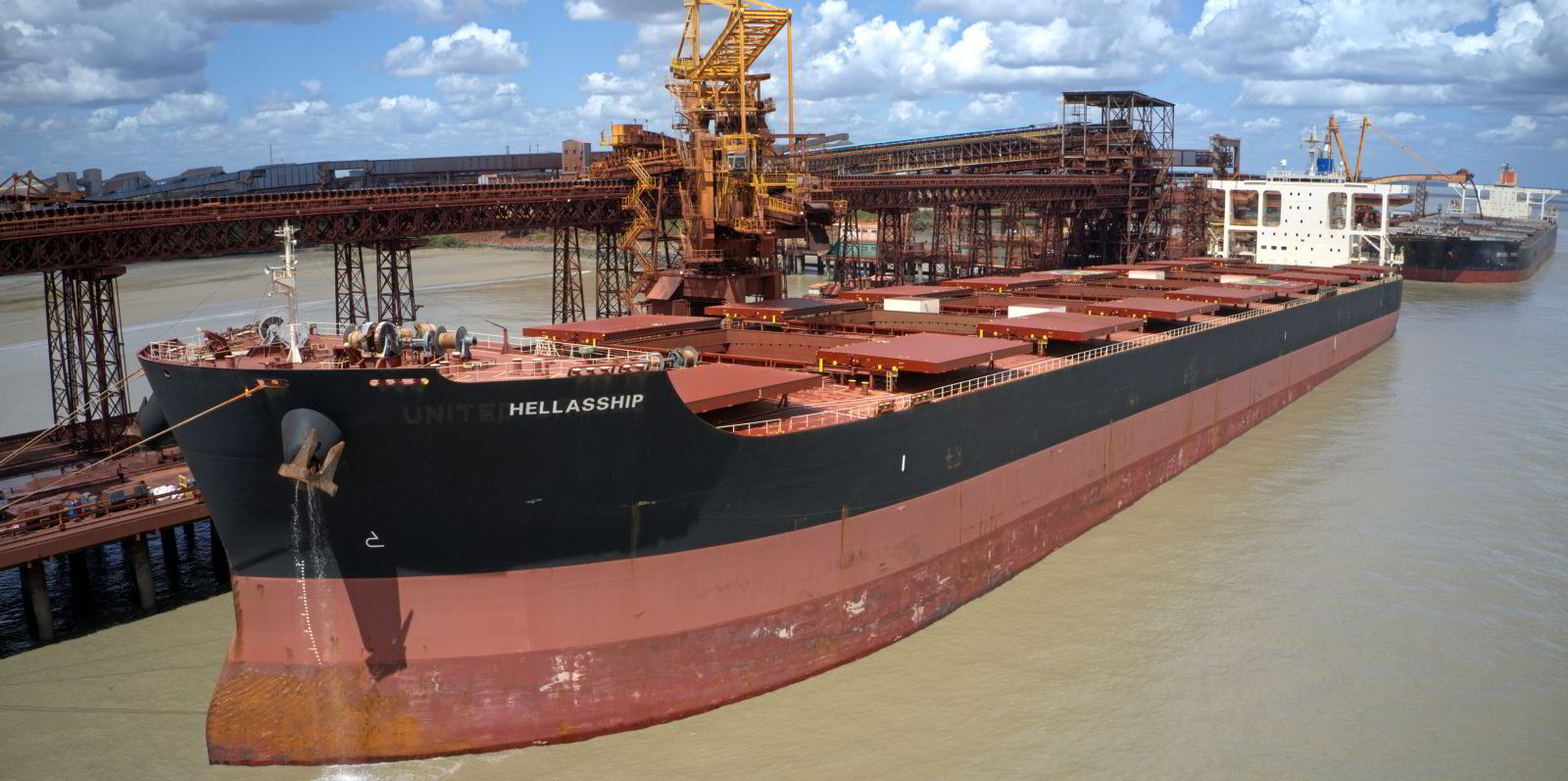Resale contracts for capesize bulkers have reached their highest premium over newbuilding prices in 10 years.
This comes on the back of a rising freight market, a rosy outlook, sustained demand for secondhand vessels and shipowners’ aversion to placing new orders.
So, it would appear Danish owner Norden grabbed a good deal with its order announced on 29 February for four capesizes, one of which will be delivered in 2025 and the rest in 2027.
Based on current estimates, the company may have saved as much as $33m by ordering new, while getting all the benefits of having at least one vessel deliver next year — into what is expected to be a bull market.
Clarksons’ data shows the estimated resale price for a conventional 182,000-dwt capesize is $76m, currently 12% above newbuilding prices.
For larger 210,000-dwt newcastlemax vessels, resales are about 11.4% more expensive at $78.5m.
It is not unusual for resale prices to be above those for newbuildings when the freight market is expected to go up in the year ahead.
What is unusual is that the differential has become particularly large so far this year.
The premium for capesize and newcastlemax resales has almost doubled in just two months, while newbuilding prices for both have plateaued.
George Warner, Arrow Shipbroking’s senior analyst for newbuildings and sale and purchase, told TradeWinds that the main reason for the uptick in secondhand S&P activity this year is the current “unseasonably firm” freight market and an optimistic outlook for the rest of 2024.
This means owners are focusing on on-the-water assets in the newcastlemax and capesize segments to take advantage of the potential earnings on offer, he said.
“We may see this translate into more demand for newbuildings going forward, but we haven’t seen this yet,” Warner said.
“Newbuilding prices for a particular ship type do often ‘lag’ behind secondhand price movements, but it is important to remember that the newbuilding market has a wider range of drivers to consider.”
Twenty-nine newcastlemaxes and capesizes changed hands in January and February, the largest number of sales on record across the first two months of any year — despite the seasonal lull in freight markets, Warner said.
This comes after a record-breaking number of bulker sales in 2023, during which 111 ships were sold, he added. Most of these were elderly units between 10 and 15 years old.
May 2014 was the last time there was such a wide premium in resale prices over newbuildings for conventionally sized capesizes.
Resale contracts at that time were being priced at around $65m, while newbuildings were 13% lower at around $57.5m, based on Clarksons’ data.
This pales in comparison to dry bulk’s all-time banner year of 2008, when resales were as much as 71% more expensive than contracting new vessels and cost as much as $165m, the data shows.
Clarksons’ data for newcastlemax resale prices only goes back as far as 2019.
Based on the available data, the price differential has never been so wide as it has become this year, growing from 6% at the start of 2024 to the current 11.4%.
“Comparatively, in 2024 so far we have seen some more modern ‘eco’ tonnage come to the fore, and given the freight market positivity, there has been increasing competition for tonnage — with more European buyers involved, following a market characterised by Chinese buyers in [the second half of] 2023 — raising price benchmarks, especially for the newest ships,” Warner said.
Potential savings
The dramatic divergence in pricing means that Norden has likely made huge savings, but the company has not divulged any further details.
Ordering four new newcastlemaxes is currently about $32m cheaper than buying resales, based on Clarksons’ assessments.
For conventionally sized capesizes, the saving is around $33m.
The Danish shipowner has likely taken a rare shipyard slot vacated by another party to ensure delivery of one vessel in 2025 and the rest in 2027.
This should give the company the benefit of a relatively prompt delivery into what is anticipated to be a rising market — without the hefty price tag.




